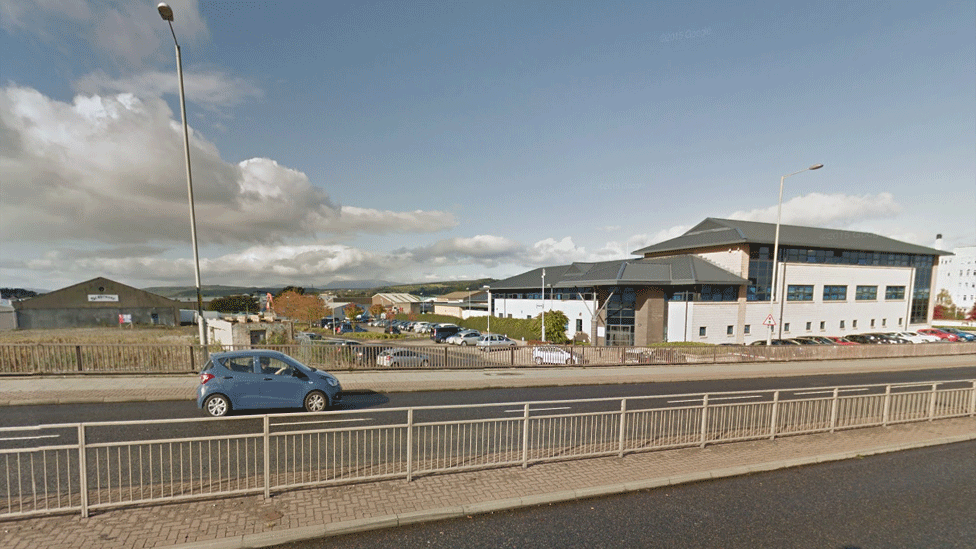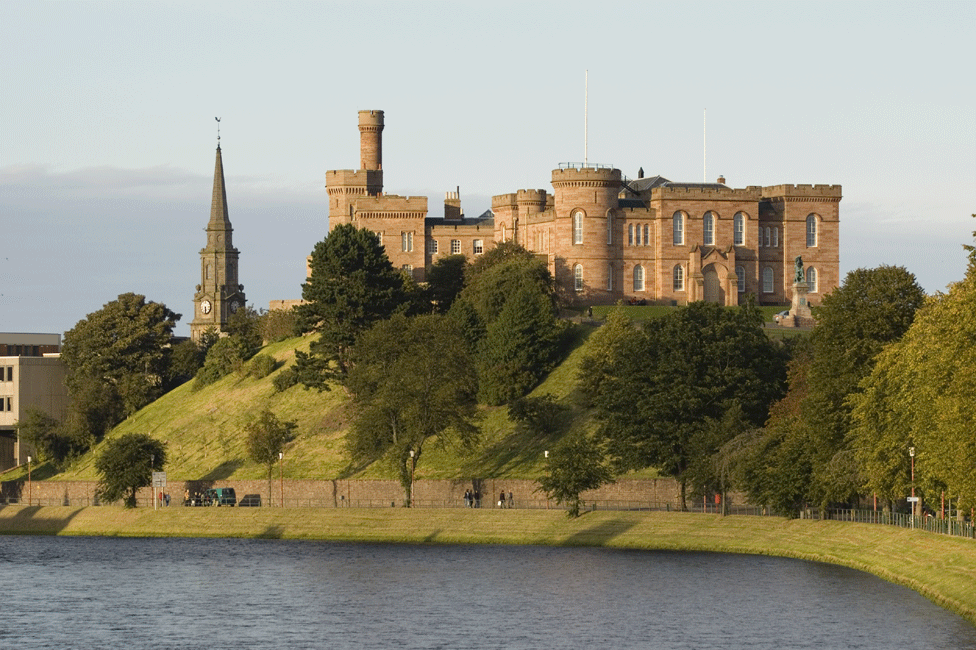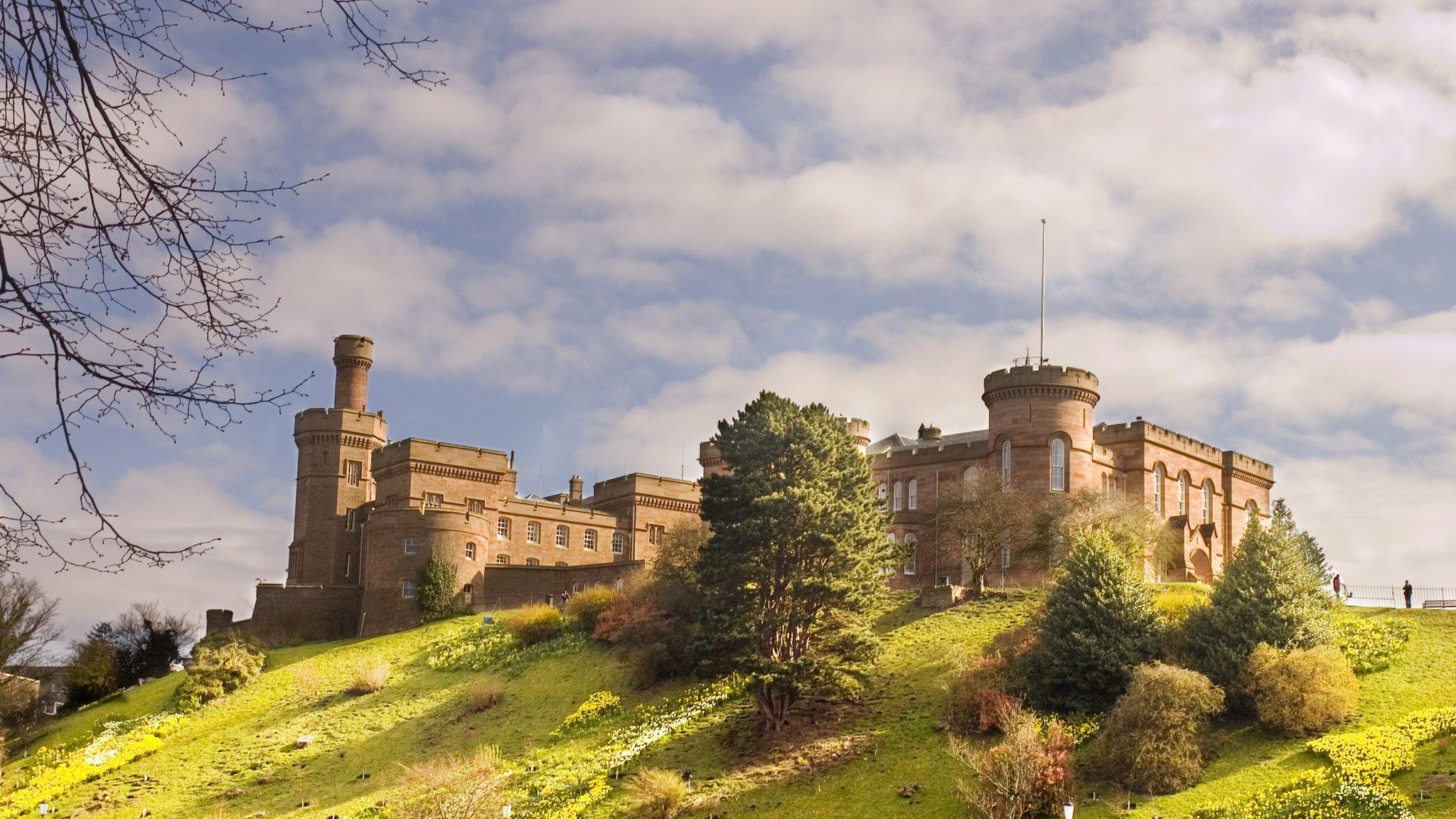New justice centre to be built in Inverness by 2018
- Published

The new justice centre has been proposed for an area of land next to Burnett Road Police Station
A new justice centre with space for holding criminal courts and other hearings has been proposed for a site on Inverness' Burnett Road.
The Scottish Courts and Tribunals Service (SCTS) plans to move out of the 19th Century Inverness Castle to the new building by the summer of 2018.
Work on the site next to Burnett Road Police Station could start this year.
The castle in Inverness city centre is to be transformed into a visitor attraction.
It could accommodate a museum and an art gallery.
'Pioneering centre'
SCTS said the Inverness Justice Centre would accommodate courts and tribunals and also provide support services for witnesses, victims, accused and those convicted in courts.
The Scottish government is backing the project and the plans to turn Inverness Castle into a tourist site.
Sheriff Principal Derek Pyle described the proposed new justice centre as an important development for SCTS.
He said: "We have an exciting opportunity to create a pioneering, state-of-the-art justice centre, which will house justice partners and third sector organisations in the same building.
"It will deliver a range of services for offenders, providing the environment for problem solving approaches to help reduce re-offending, and offer specialist facilities, support and advice for victims and witnesses of domestic abuse, sexual violence and child abuse."
Justice Secretary Michael Matheson said: "I am delighted that the development of the new Inverness Justice Centre, made possible with funding from the Scottish government, has taken a step forward today.
"We are now closer to delivering a facility which is accessible and modern, supporting the delivery of justice in the north of Scotland."

A brief history of Inverness Castle

The sandstone Inverness Castle was built in 1836 to plans drawn by architect William Burn.
It was constructed on a mound overlooking the city and the River Ness. In 1848, a building known as the North Block was added and served as a prison.
But a castle had occupied the site from possibly as far back as the 11th Century.
Over the centuries, the fortification fell under the control of the forces of Edward I, Robert the Bruce and James I, II and IV.
In 1562, it was attacked and damaged by soldiers loyal to Mary, Queen of Scots, before it was almost destroyed by Royalist troops in the 1600s.
Bonnie Prince Charlie's forces blew the castle up in 1746 to prevent it from falling into the hands of government troops.
It was said that a French sergeant, who had brought his poodle with him to Scotland, set off the explosives.
The soldier was caught in the blast, and his body was blown across to the opposite side of the River Ness.
His dog was also hurled over the river by the explosion. It survived, though it lost its tail.

Tourism Minister and co-chairman of the Inverness Castle Working Group, Fergus Ewing said relocation of court services from Inverness Castle offered an opportunity to develop a "world-class tourism attraction".
"Tourism is not just a key part of the local economy but a key driver of growth across Scotland and I am very keen that the castle finds a new life that benefits the Highlands and Scotland as a whole," he said.
Eric McQueen, SCTS chief executive, said "hard work" would go into the final design of the new centre.
Inverness Provost Helen Carmichael said both projects should be welcomed.
She added: "This heralds the start of a really bright future for the city."
- Published5 February 2016

- Published18 December 2015

- Published27 November 2015
